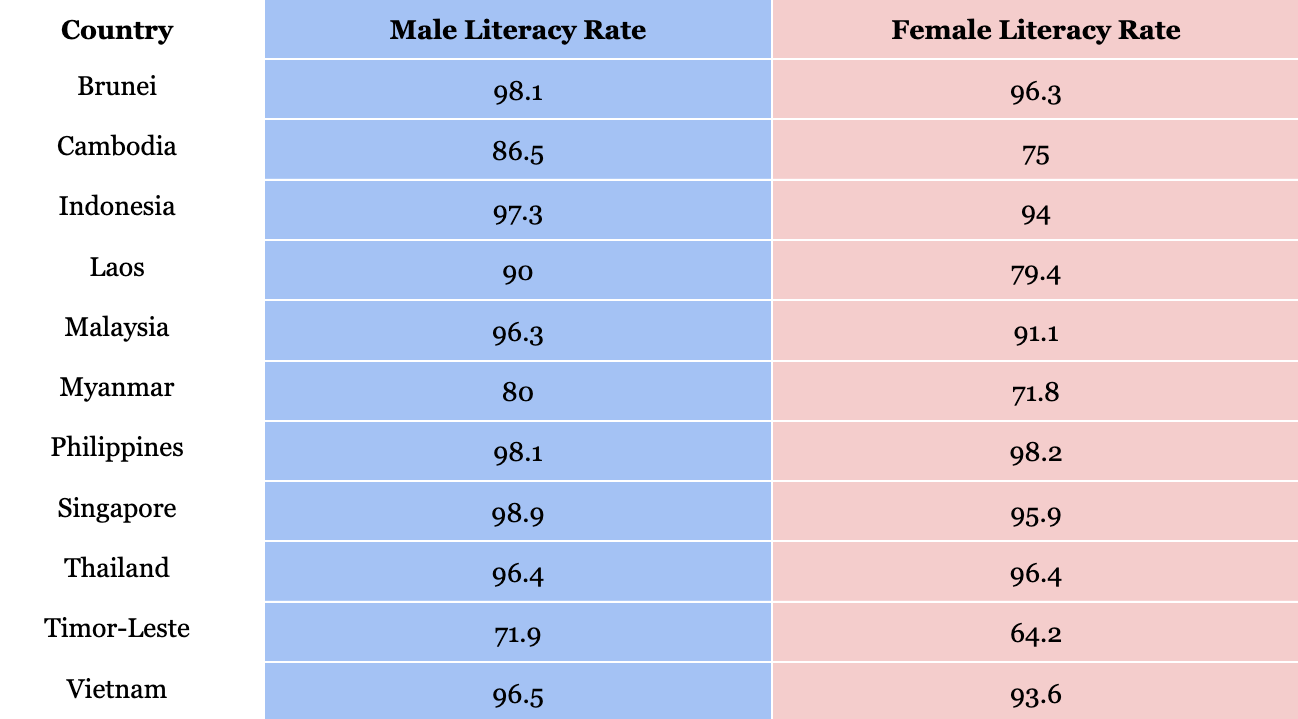It’s a fact: The connection between education and the economy is highly critical for any country. As a country’s education system improves, so does its economy; and as the economy grows, the quality of education advances.
In Southeast Asia, home to around 655 million people, the focus given to education has helped boost the region’s socio-economic development over the decades. The eleven countries — Brunei Darussalam, Cambodia, Indonesia, Laos, Malaysia, Myanmar, the Philippines, Singapore, Thailand, Timor-Leste, and Vietnam — share a similar priority on human resource development as a key to becoming a knowledge-based economy. Before COVID-19 disrupted the region’s predominantly teacher-centered and classroom-based learning, around 12 million students were enrolled in over 7,000 higher education institutions.
Great strides have been made in advancing the overall quality of education — from initiating programs to increase enrolment and completion rates to building classrooms conducive to learning and designing gender-inclusive curricula. In fact, a report by the Organization for Economic Cooperation and Development stated that beyond improved infrastructure and programs, Southeast Asia has also achieved gender parity in education. In all Southeast Asian countries for which data are available, as many girls as boys — and sometimes more girls than boys — are enrolled in primary, secondary, and tertiary education.

A new survey released by Visual Capitalist this week supports this claim. In its “Visualizing Literacy Rates Around the World” report, the online publishing company listed more than 150 countries and provided a breakdown of male versus female literacy rates, using data from UNESCO.
From 1960 to 2015, global literacy has grown from 42% to 86% — an approximate 4% increase every five years, the report reads. While overall literacy rates have increased, some countries have seen more growth than others. According to the data gathered by Visual Capitalist, Ukraine in Eastern Europe and Uzbekistan in Central Asia have clocked in 100% literary rates for both their female and male populations — the only countries to do so.
On the other end of the spectrum, Chad and Niger in Africa have the lowest literacy rates: Chad - 14% female literacy rate; 38.9% male; Niger - 22.6% female literacy rate; 39.1% male.
For Southeast Asian countries, Thailand’s male and female literacy rates were equal at 96.4%, while the Philippines’ female population scored slightly higher at 98.2% compared to the male literacy rate at 98.1%. Vietnam’s literacy rate, meanwhile, showed that more males (96.5%) are literate than females (93.6%).

These figures are quite an improvement from the past data, Visual Capitalist noted. “A broad target in the official list of the UN’s Sustainable Development Goal 4 is to close the gender gap in education. And as the data shows, some regions are already meeting this target, with most countries in Central Asia, Europe, Northern America, Eastern, and South-Eastern Asia, and Latin America already at virtual gender parity for literacy.”
However, countries in South Asia — Pakistan and Afghanistan, specifically — are still showing significant disparities between genders. Afghanistan showed a 25.7% gender gap in literacy.
Separate data by the United Nations revealed that more than 600 million youth worldwide lack basic mathematics and literacy skills. Before the coronavirus crisis, projections showed that more than 200 million children would be out of school, and only 60% of young people would be completing upper secondary education in 2030. Consequently, some 750 million adults — two-thirds of them women — remained illiterate in 2016.
Through government-backed and UN-funded projects, the UN aims to ensure that all girls and boys complete free, equitable and quality primary and secondary education by 2030. Also part of the SDG Goal 4 of Quality Education is to ensure equal access for all women and men to affordable and quality technical, vocational and tertiary education, including university, and to eliminate gender disparities in education over the next decade.
